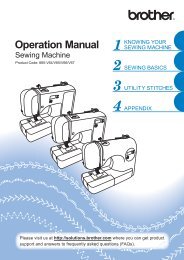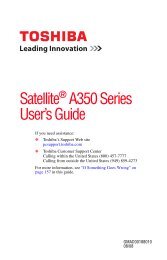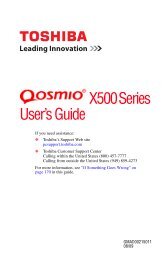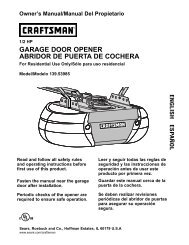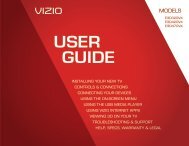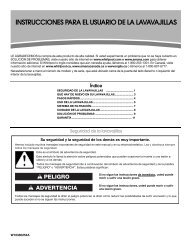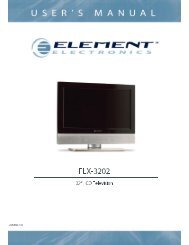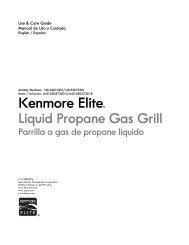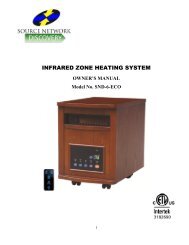Satellite® T210/T230 Series User's Guide - Howard Computers
Satellite® T210/T230 Series User's Guide - Howard Computers
Satellite® T210/T230 Series User's Guide - Howard Computers
You also want an ePaper? Increase the reach of your titles
YUMPU automatically turns print PDFs into web optimized ePapers that Google loves.
NOTE<br />
NOTE<br />
Exploring Your Computer’s Features<br />
Exploring the desktop<br />
125<br />
❖ TECHNICAL NOTE: If you delete a large number of files or very<br />
large files from the internal storage drive, there may be<br />
insufficient space available in the Recycle Bin to hold these files.<br />
In this case, Windows ® will prompt you to either permanently<br />
delete the file(s) or cancel the deletion.<br />
❖ If you delete a file (of any size) from external media or flash<br />
media, it does not go into the Recycle Bin. The file is<br />
permanently deleted.<br />
❖ Permanently deleted files cannot be recovered from the Recycle<br />
Bin.<br />
For more information on the Recycle Bin, see Windows ® online<br />
Help.<br />
If you place the pointer over an icon, a popup description of the file<br />
contents appears.<br />
Your desktop may contain other icons depending on your<br />
configuration. See Windows ® online Help for more specific<br />
information on each icon and how to use it.<br />
Start button<br />
You use the Start button to:<br />
❖ Start programs<br />
❖ Open documents<br />
❖ Adjust system settings<br />
❖ Find files<br />
❖ Access Windows ® Help and Support<br />
❖ Suspend system activity and shut down the computer<br />
Whenever a procedure in this User’s <strong>Guide</strong> instructs you to click<br />
Start, it means that you should click the Start button.



